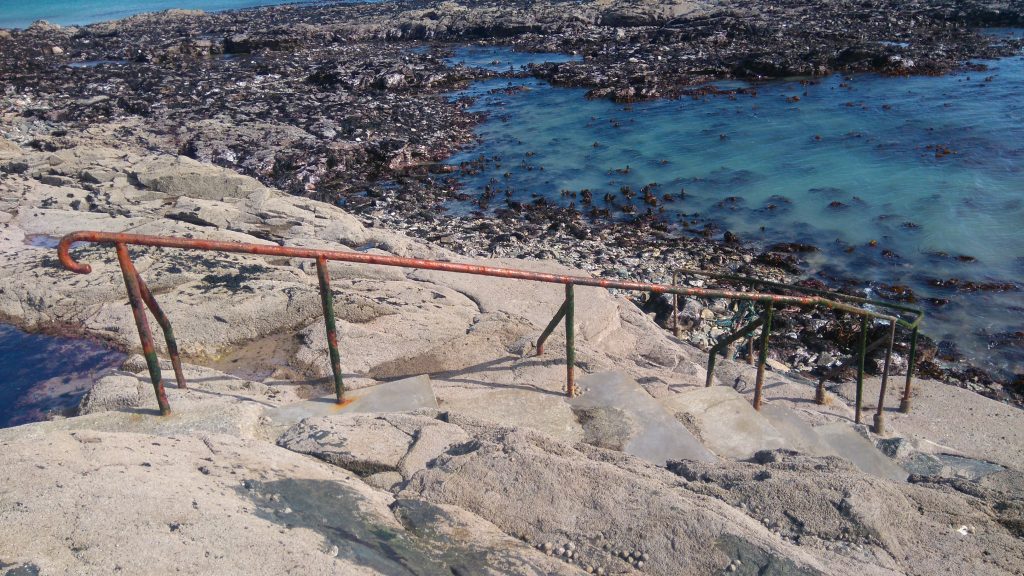
The fact that a gun battery was at one time situated on the Battery Rocks adjacent to the iconic Jubilee Pool is well known, but few I suspect know that there was another Penzance Battery. One that was built about 1855, east of the town on the cliffs near Chyandour, overlooking Mounts Bay.
Battery Rocks is so named because in 1740 a battery was built here to protect the town and harbour. War had been declared with the Spanish in October 1739 after years of worsening relations between the two countries. Remembering the successful Spanish raid on Mousehole and Penzance in 1595 the Penzance Corporation had ask the government for some ”great guns” to be housed on a battery built at the Corporations own expense.

The battery that cost £200, was a heptagonal [7-sided] granite platform with battered walls to protect it from the sea and a stone causeway connecting it to the shore. The Corporation had to pay for the upkeep of the battery, for the lead balls and powder and for cleaning the guns. During the Napoleonic Wars of 1793 to 1815 the battery, complete with flagpole and gateway, with its three 24 pounders was manned by a local company of volunteers.
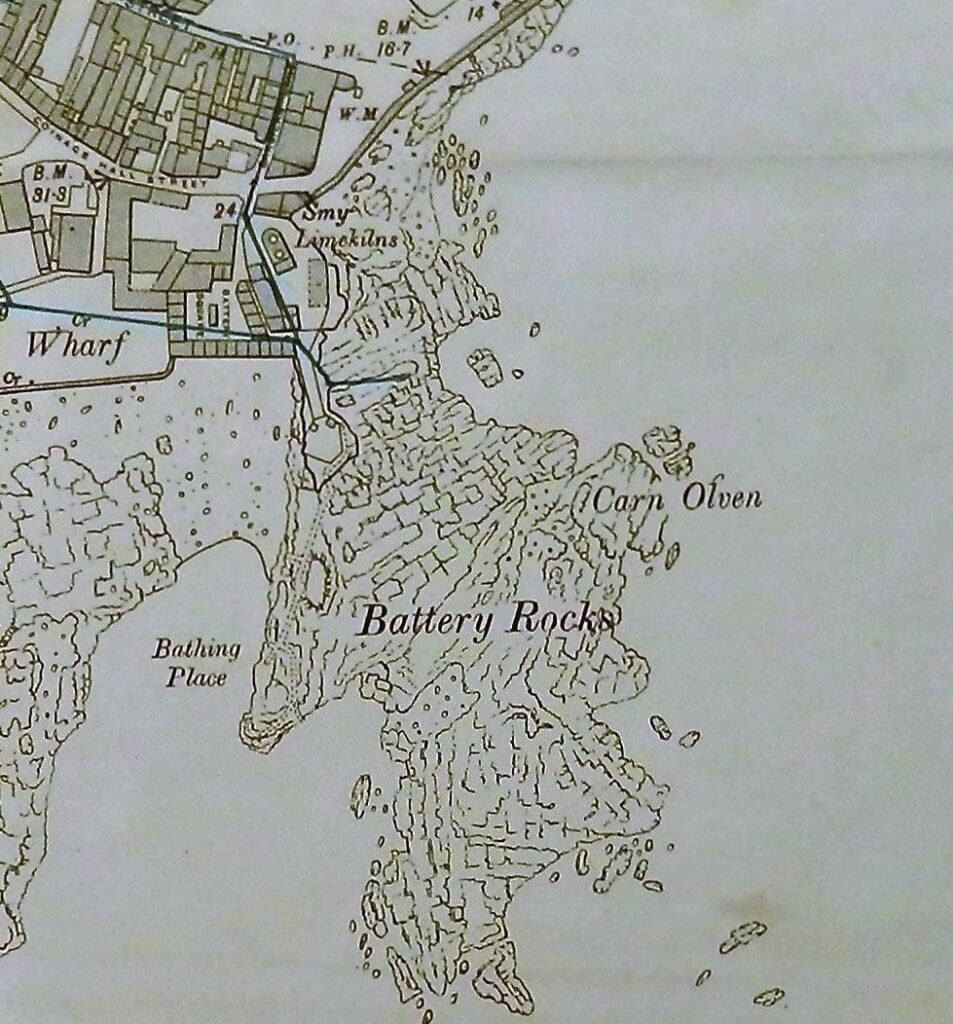
Two more guns were set up on Western Green to defend Newlyn pier and later in 1802 another battery was built on Carn Gwavas, above the road from Newlyn to Mousehole.
With a perceived increase in the threat from the French navy, in 1852 two new forts were built to protect Portsmouth Harbour. Following the Royal Commission on the Defence of the United Kingdom of 1860, a massive fortification programme was started to protect the other major ports and dockyards in southern England.
Meanwhile in Penzance, in 1855 the War Office compulsorily purchased a field on the low cliffs to the east of the town to build a new Battery. There is however, little mention of it that I can find, in the history of the Town.
The Cornishman on 31 July 1879 noted that the Penzance Brigade practiced at the upper Battery from guns mounted on traversing platforms, but little else.
The entry in Kelly’s Directory of 1889 gives the following details:
‘A battery has been constructed at Chyandour to represent the fighting deck of a battleship, and is intended for the gunnery instruction of the Naval Reserve attached to the Penzance district; there is one 6in. breech-loader with Armstrong mountings, two 5in. breech-loaders with Vavasour mountings, three 1in. four-barrel Nordenfeldts, one five-barrel Gardiner, a drill shed 60 feet by 50 feet, also a shed for two 9lb. field guns for target practice.’
It goes on to give details of the Duke of Cornwall’s Royal Garrison Artillery, at The Battery, Chyandour Cliff; 2nd Heavy Battery, right section. But no mention of any Naval Reserve, so were the guns at the new battery not being used for naval gunnery instruction?
The 1902 Kelly’s gives the same description of the Battery and details of two volunteer units:
‘A’ Company 1st Volunteer Battalion Duke of Cornwall’s Light Infantry in the Corn Exchange, Market House buildings: Capt. Thomas Henry Cornish.
No. 7 Company, 1st Duke of Cornwall’s Volunteer Artillery, Western Division, Royal Artillery, Major P. Marrack, commandant, with headquarters in Causewayhead.
In WW2 anti-aircraft guns were, I understand, installed at the Battery either side of the control tower that is now used by National Coastwatch. The guns are gone but the parade ground is still in place, plus the HQ building for the Penzance Army Cadets and an old shed or garage with no date visible.
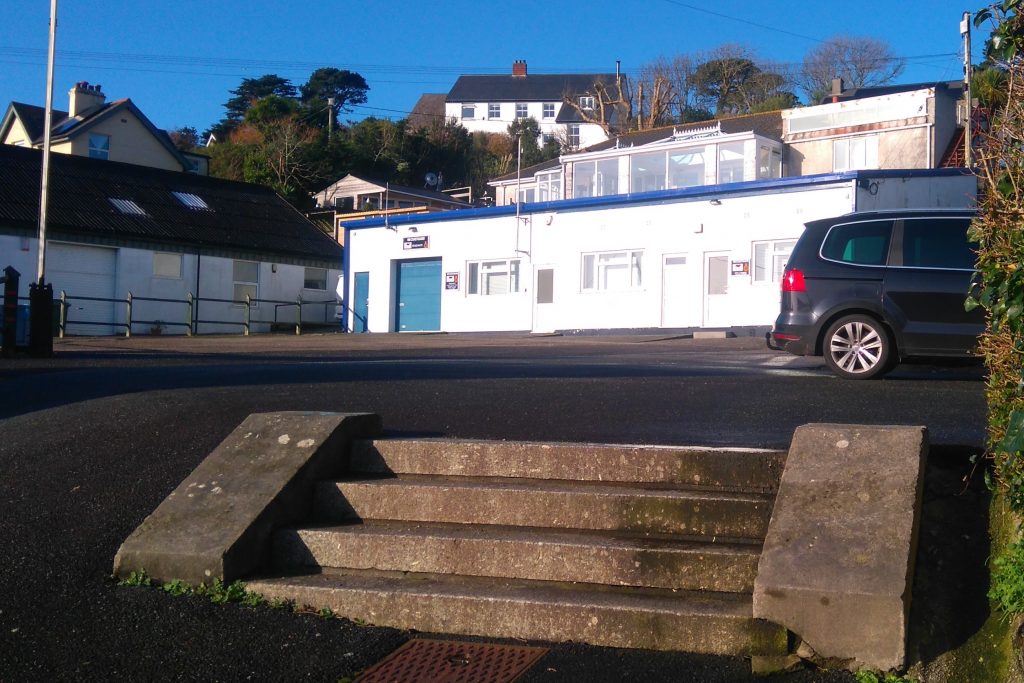
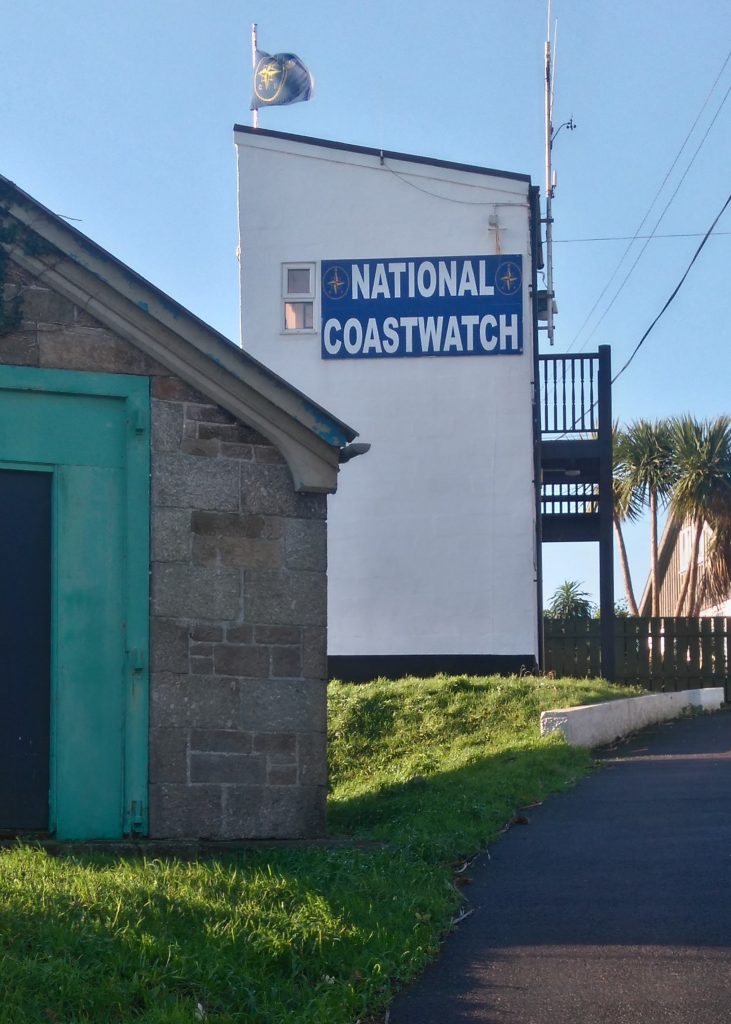
A war memorial was erected in the middle of the old Battery, dedicated to those of Penzance who fell in the ‘Great War of 1914 -1919’. It consists of a tall obelisk standing on a square plinth and on two of the faces are inscribed the 207 names of the fallen. It was designed by Sir Edward Warren a prolific church architect, and unveiled on 14th May 1922 by Mrs Bolitho and dedicated by the Bishop of Truro.
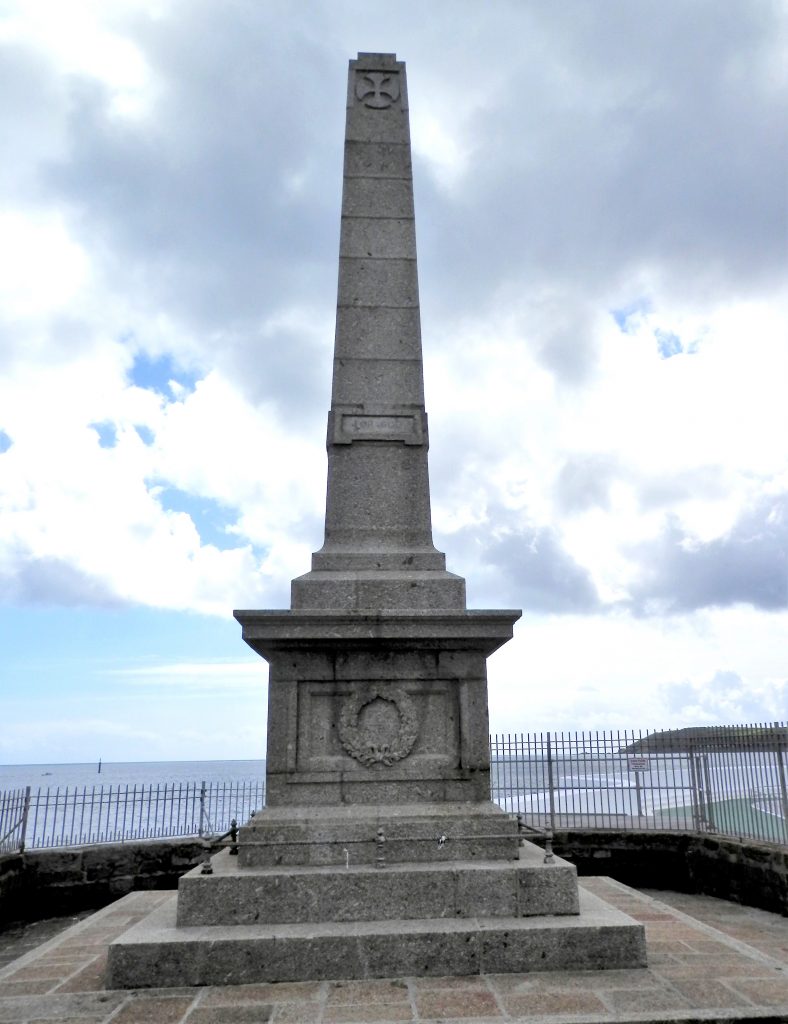
In 1935 the new Bathing Pool, later known as the Jubilee Pool, was built with one wall abutting those of the 1740 battery. Not everyone was happy with the pool being built there, some thought that much of the isolation and dignity of the War Memorial was lost by its construction. Today, Battery Rocks happily hosts the Jubilee Pool, the War Memorial, the remains of the Battery and the hardier swimmers can still get to the traditional bathing place for a swim in the sea, without any loss of dignity. The Victorian battery however, remains largely unknown.
